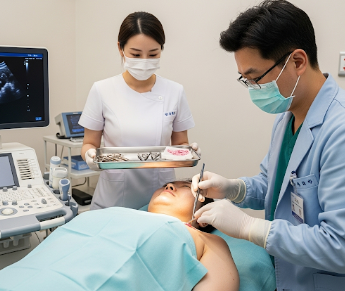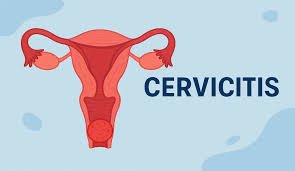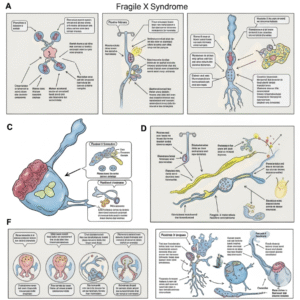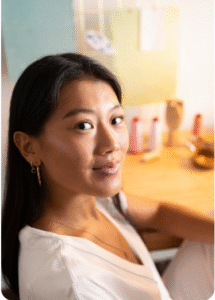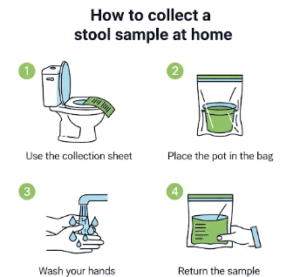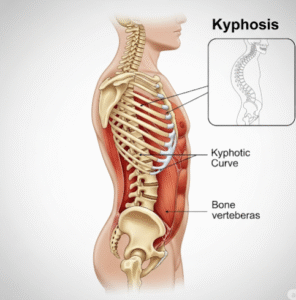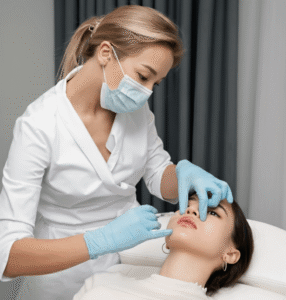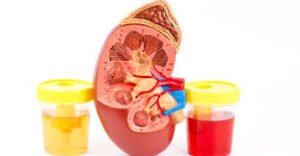Overview
An excision biopsy of a breast lump is a surgical procedure in which a suspicious lump or tissue is completely removed from the breast for diagnostic examination. Unlike fine-needle aspiration or core needle biopsy, excision biopsy removes the entire lump, providing a definitive diagnosis of whether the tissue is benign or malignant.
In South Korea, excision biopsy is performed in advanced breast care and surgical centers with highly skilled breast surgeons. Korean hospitals employ state-of-the-art imaging, precise surgical techniques, and modern anesthesia, ensuring safe, effective, and cosmetically mindful procedures.
What is an Excision Biopsy of a Breast Lump?
Excision biopsy involves surgically removing a breast lump along with a margin of normal tissue for histopathological analysis. It is typically recommended when:
- Imaging or previous biopsy results are inconclusive
- A lump is palpable and suspicious for malignancy
- Patients prefer definitive removal and diagnosis
The procedure allows both diagnosis and treatment in cases of small benign lumps, ensuring peace of mind and early intervention if malignancy is detected.
What are the benefits?
Excision biopsy of a breast lump offers several advantages:
- Definitive diagnosis → complete tissue is examined for malignancy
- ➤ Removes suspicious lump → may be therapeutic for benign lesions
- ➤ Minimally invasive options available → small incisions for cosmetic preservation
- ➤ Reduces uncertainty and anxiety → clear pathological results
- ➤ High success rates in Korea → precise removal and minimal recurrence of benign lesions
- ➤ Cosmetic consideration → breast shape and appearance are preserved
Procedure Details
1) How should I prepare for Excision Biopsy of a Breast Lump?
Preparation is key for safe and effective surgery:
- Medical evaluation → blood tests, imaging (ultrasound, mammography, or MRI), and review of medical history
- Medication adjustment → blood thinners may need temporary discontinuation
- Fasting → usually no food or drink 6–8 hours before surgery
- Anesthesia consultation → local or general anesthesia options are discussed
- Informed consent → patients are educated about procedure, risks, benefits, and recovery
2) What happens during the procedure Excision Biopsy of a Breast Lump?
The procedure typically takes 30–60 minutes:
- Anesthesia → local or general anesthesia depending on lump size and patient preference
- Incision → surgeon makes a small incision over or near the lump, carefully preserving breast aesthetics
- Lump removal → the lump is excised along with a margin of surrounding tissue for complete analysis
- Hemostasis → bleeding is controlled using cautery or sutures
- Closure → incision is closed with fine sutures and a sterile dressing applied
- Specimen analysis → excised tissue is sent to the pathology lab for definitive diagnosis
In Korea, surgeons use advanced imaging and intraoperative guidance to ensure precise removal while minimizing cosmetic impact.
3) What happens after an Excision Biopsy of a Breast Lump?
- Immediate recovery → monitored until anesthesia effects wear off
- Pain management → mild analgesics for discomfort
- Activity restriction → avoid strenuous activity and heavy lifting for 1–2 weeks
- Wound care → keep incision clean and dry; follow-up appointments for suture removal or dressing check
- Pathology follow-up → results typically available within a few days to a week
- Long-term outlook → most benign lumps are fully removed, and breast appearance is preserved
Risks / Benefits
Potential Risks:
- Mild pain, swelling, or bruising at the incision site
- Infection at the surgical site (rare)
- Hematoma formation → collection of blood under the incision
- Scar formation → usually minimal and cosmetically acceptable
- Rare complications → anesthesia-related issues or incomplete removal of tissue
Key Benefits:
- Definitive diagnosis of suspicious lumps
- ➤ Therapeutic removal of benign lesions
- ➤ Minimally invasive and cosmetic-friendly techniques
- ➤ Early detection of malignancy if present
- ➤ High success and safety rates in Korea
Recovery and Outlook
- Short-term recovery → mild discomfort and limited activity for the first week
- Functional improvement → pain relief and removal of suspicious lump
- Cosmetic results → small, well-placed incision maintains breast shape
- Long-term outcome → most patients have complete recovery, and benign lumps rarely recur
- In Korea, patients benefit from modern surgical techniques, careful cosmetic planning, and expert postoperative care
When To Call the Doctor
Contact your healthcare provider if you experience:
- Severe pain or swelling at the incision site
- ➤ Signs of infection such as redness, warmth, or discharge
- ➤ Persistent bleeding or hematoma
- ➤ Changes in breast shape or recurrence of a lump
- ➤ Any unusual symptoms beyond expected postoperative recovery
Early evaluation ensures safe recovery and accurate management of pathology results.
Best Korea Option / Process
South Korea is a leading destination for breast surgery and biopsy procedures:
- Expert breast surgeons → skilled in excision biopsy and cosmetic breast surgery
- Advanced imaging and surgical guidance → ensures precise removal with minimal scarring
- Comprehensive care packages → preoperative evaluation, surgery, pathology follow-up, and postoperative care
- Minimally invasive outpatient procedures → reduced hospital stay, faster recovery
- International patient support → multilingual staff, appointment scheduling, and personalized care
Patients choosing Korea for excision biopsy of a breast lump can expect safe, effective, and cosmetically considerate results, making it a top destination for breast care in Asia.

